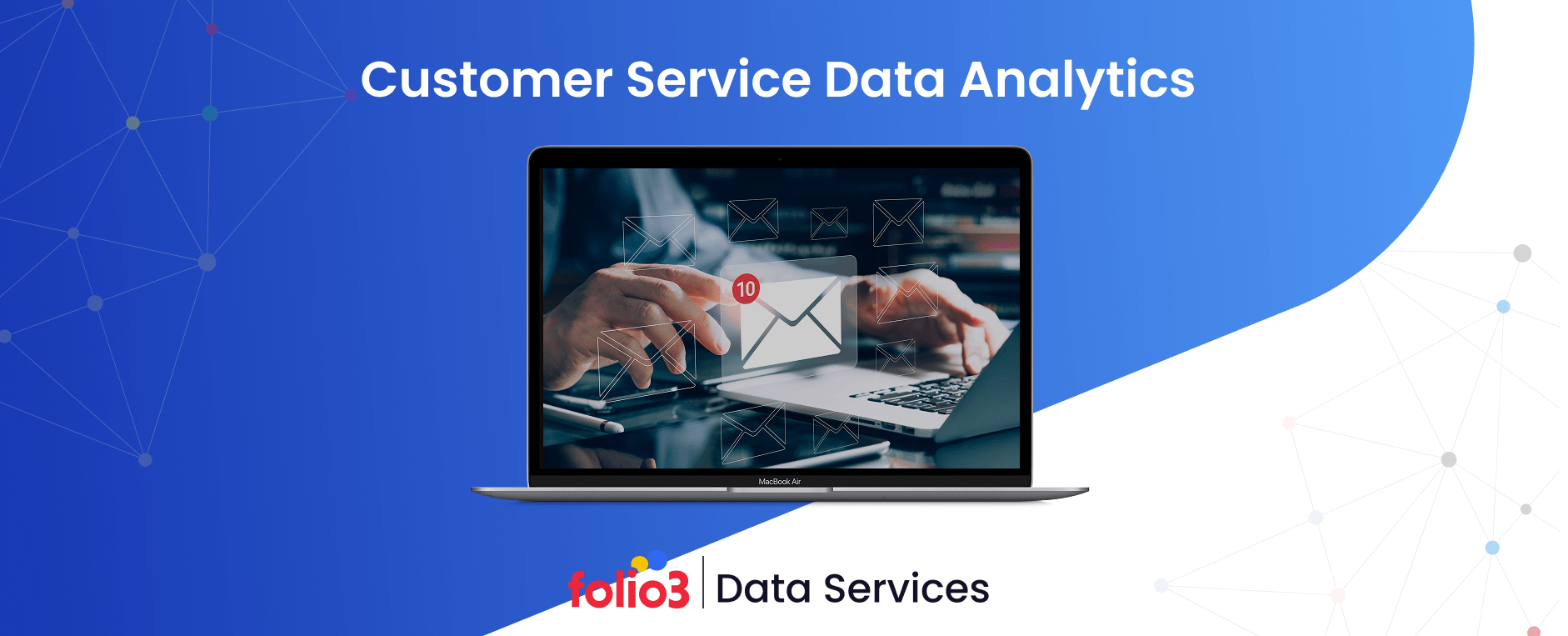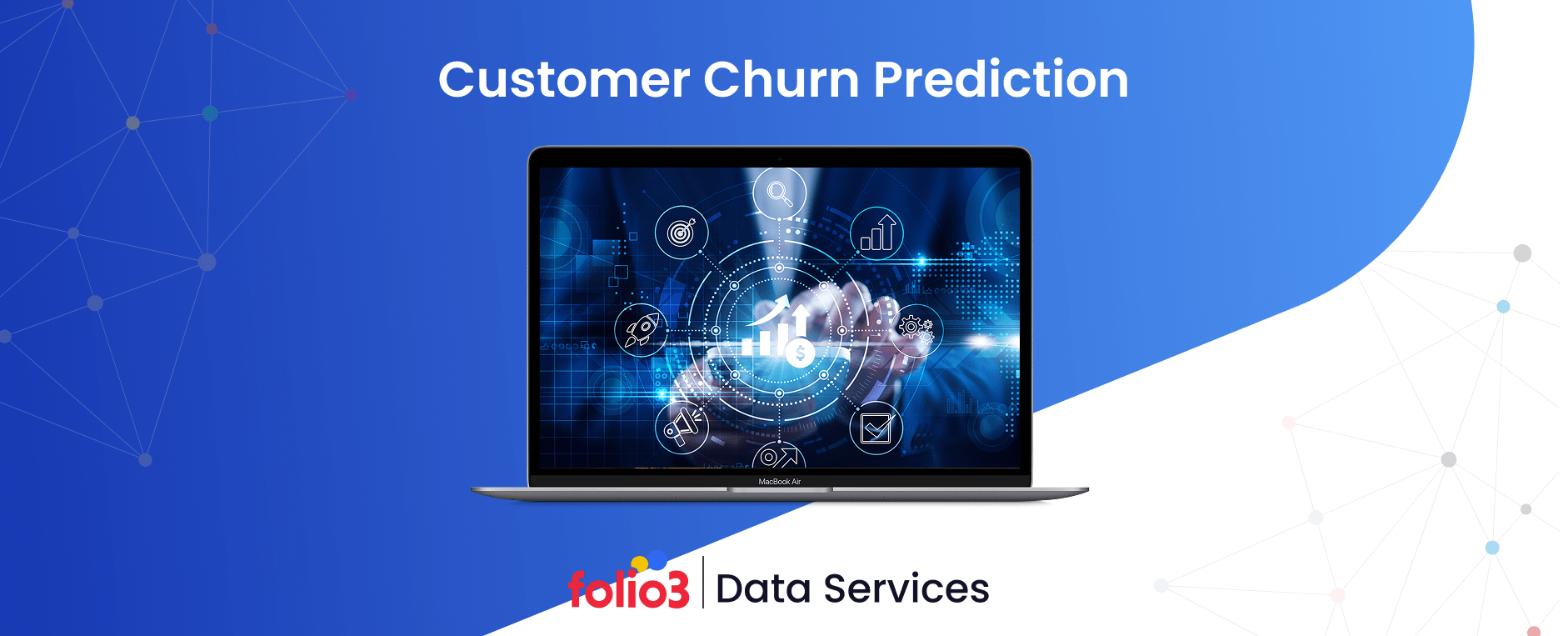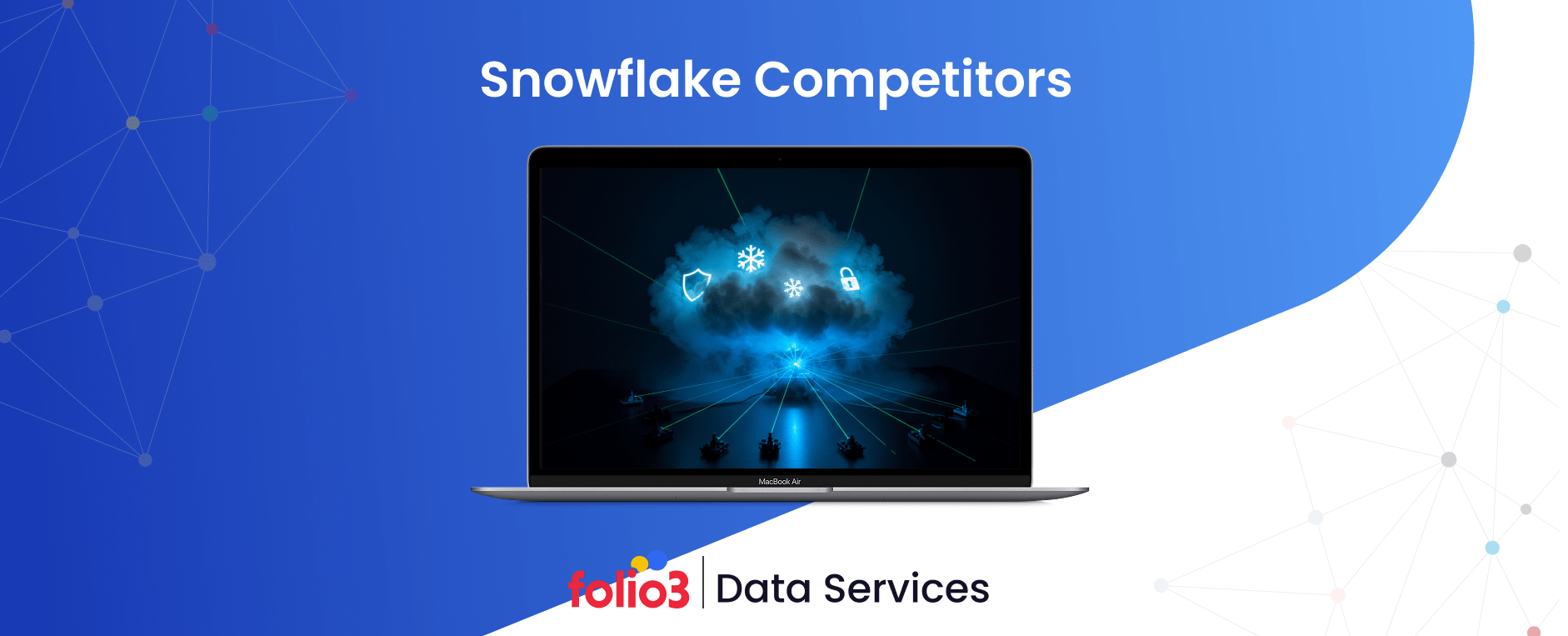Customer service has transformed from simple help desk operations to strategic business functions that directly impact revenue and brand perception. What started as reactive ticket management has evolved into proactive customer intelligence operations that predict needs, prevent issues, and create competitive advantages.
The shift toward data-driven customer service reflects broader business trends where customer experience quality determines market success. Organizations that master customer service analytics report 23% higher revenue growth and 12% better customer retention compared to those using traditional reactive approaches.
Modern customer service generates massive amounts of interaction data like chat transcripts, call recordings, email exchanges, social media mentions, and behavioral patterns across digital touchpoints. This information contains insights that can transform support operations from cost centers into strategic assets that drive customer lifetime value.
This analysis explores how customer service data analytics enables organizations to anticipate customer needs, optimize resource allocation, and create personalized support experiences that strengthen customer relationships and business performance.
What Are Customer Service Analytics?
Customer service analytics encompasses the systematic analysis of support interactions, performance metrics, and customer behavior patterns to improve service delivery and business outcomes.
Unlike traditional reporting that focuses on historical performance summaries, customer service analytics combines multiple data sources to create actionable intelligence about customer needs, agent effectiveness, and operational efficiency. This approach treats customer service data as a strategic resource rather than operational overhead.
The discipline extends beyond simple metrics tracking to include behavioral analysis, sentiment evaluation, and predictive modeling that helps organizations understand why customers contact support and how to resolve issues more effectively. Modern customer service analytics platforms process structured data from ticketing systems alongside unstructured content from conversations, surveys, and social media interactions.
This comprehensive view enables organizations to identify patterns that weren’t visible through traditional reporting methods. Teams can spot emerging issues before they become widespread problems, understand which resolution approaches work best for different customer segments, and predict resource needs based on seasonal patterns and business changes.
What Types of Customer Service Analytics Drive Business Value?
Different analytical approaches serve distinct business purposes and provide complementary insights into customer service performance and opportunities. These approaches also align with broader types of data analytics used across industries. Here are the different types of customer service analytics:
1. Descriptive Analytics
Descriptive analytics provides a foundational understanding of what happened in customer service operations through historical data analysis and performance measurement.
These analyses answer basic questions about support volume, resolution times, customer satisfaction scores, and agent productivity. While descriptive analytics don’t explain why events occurred, they establish baseline performance metrics and identify trends that warrant deeper investigation.
Most organizations start with descriptive analytics because the data requirements are straightforward and the insights are immediately actionable for operational management. Support managers use these insights to adjust staffing levels, identify training needs, and report performance to executive teams.
The value of descriptive analytics increases when combined with comparative analysis that benchmarks current performance against historical periods, industry standards, or internal goals. This context helps teams understand whether performance changes represent meaningful improvements or concerning declines.
2. Diagnostic Analytics
Diagnostic analytics examines why specific customer service outcomes occurred by analyzing relationships between different variables and identifying root causes of performance patterns.
This analytical approach might reveal that customers who contact support through chat channels have higher satisfaction scores than phone callers, or that certain types of issues take longer to resolve during specific times of day. These insights help teams understand the underlying factors that drive customer service performance.
Diagnostic analytics become particularly valuable for addressing recurring problems or performance inconsistencies. When customer satisfaction scores decline, diagnostic analysis can identify whether the issue stems from increased case complexity, staffing changes, process modifications, or external factors like product issues.
Advanced diagnostic analytics can also identify interaction patterns that predict customer behavior, such as communication styles that indicate high churn risk or resolution approaches that tend to generate follow-up contacts.
3. Predictive Analytics
Predictive analytics uses historical patterns and machine learning algorithms to forecast future customer service needs, outcomes, and resource requirements.
These models might predict which customers are likely to contact support based on their usage patterns, which issues will require escalation to senior agents, or how long specific types of cases will take to resolve. This foresight enables proactive resource allocation and intervention strategies.
By applying advanced predictive analytics techniques, organizations can improve the precision of these forecasts, identifying not only when issues are likely to occur but also the best intervention strategies to address them effectively.
Predictive analytics also support strategic planning by forecasting changes in support volume based on business growth, product launches, or seasonal patterns. Organizations can adjust staffing plans, technology investments, and process improvements based on anticipated future needs rather than reactive responses to capacity constraints.
The accuracy of predictive models improves with data volume and quality, making them particularly valuable for organizations with large customer bases and extensive interaction histories.
4. Prescriptive Analytics
Prescriptive analytics recommends specific actions to achieve desired customer service outcomes based on data analysis and optimization algorithms. These systems might recommend optimal ticket routing strategies, suggest response templates that are most likely to resolve specific issue types, or identify the best times to contact customers who show signs of dissatisfaction proactively.
Prescriptive analytics represent the most advanced form of customer service analytics because they combine predictive insights with business rules and optimization logic to generate actionable recommendations. This approach enables data-driven decision-making at scale while maintaining consistency with business objectives.
Implementation of prescriptive analytics often requires integration with operational systems so that recommendations can be implemented automatically or presented to agents at the point of customer interaction.
What Are the Essential Metrics for Customer Service Performance?
Strategic customer service measurement focuses on metrics that directly connect to business outcomes and customer experience quality.
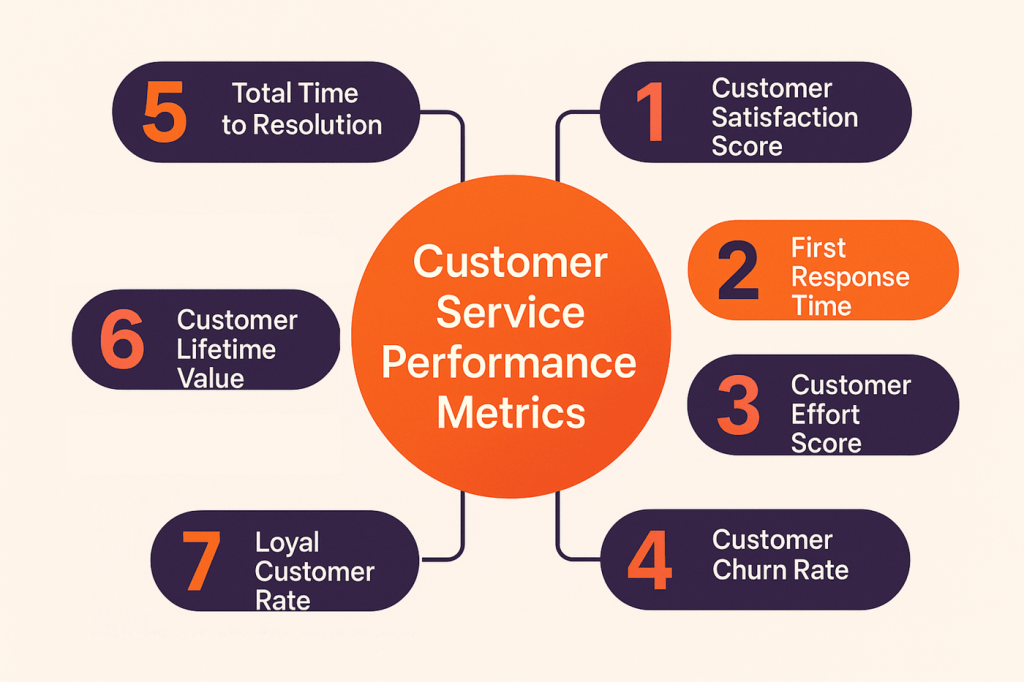
1. Customer Satisfaction Score (CSAT)
CSAT measures immediate customer satisfaction with specific service interactions, typically collected through post-interaction surveys with rating scales or yes/no questions about satisfaction levels.
This metric provides direct feedback about service quality from the customer perspective, making it valuable for identifying both excellent and problematic service experiences. High CSAT scores correlate with customer retention and positive word-of-mouth marketing.
CSAT analysis becomes more valuable when segmented by interaction type, agent performance, issue category, or customer demographics. These breakdowns help teams identify which service approaches work best for different situations and customer groups.
Organizations should track CSAT trends over time rather than focusing on individual scores, as patterns reveal whether service improvements are having a sustained impact on customer perceptions.
2. First Response Time (FRT)
FRT measures the time between when customers submit support requests and when they receive initial responses from support agents or automated systems.
Fast first response times demonstrate organizational responsiveness and help set positive customer expectations for the support experience. Research shows that 90% of customers rate immediate responses as essential to their service experience.
FRT analysis should account for different communication channels and customer segments, as expectations vary significantly between enterprise customers who expect immediate responses and individual consumers who may accept longer response times for non-urgent issues.
Balancing speed with quality requires careful analysis, as extremely fast response times may indicate superficial responses that don’t actually address customer needs effectively.
3. Customer Effort Score (CES)
CES evaluates how easy customers find it to get their issues resolved, typically measured through surveys asking customers to rate the effort required to achieve their goals.
This metric connects directly to customer loyalty, as research demonstrates that customers who experience low-effort service interactions are more likely to increase their business with the organization and recommend it to others.
CES analysis helps identify friction points in support processes that may not be visible through other metrics. High effort scores indicate confusing self-service options, excessive transfer between agents, or complex resolution procedures.
Improving CES often requires process redesign rather than just performance coaching, making it valuable for identifying systemic issues that impact customer experience quality.
4. Customer Churn Rate (CCR)
CCR measures the percentage of customers who stop doing business with the organization within specific periods, providing direct insight into customer retention performance.
While many factors beyond customer service influence churn, the quality of support experience significantly impacts customer decisions to continue or discontinue relationships with organizations.
Analyzing churn to support interactions can reveal whether specific types of service experiences predict higher or lower retention rates. This insight helps teams prioritize improvement efforts on the service factors that most directly impact customer retention.
Advanced churn analysis connects support interaction patterns with customer lifetime value to identify which service improvements will have the most significant financial impact on business performance.
5. Total Time to Resolution (TTR)
TTR measures the complete time required to fully resolve customer issues, from initial contact through final resolution and customer confirmation of satisfaction.
This metric reflects operational efficiency and customer experience quality, as faster resolution times generally correlate with higher customer satisfaction and lower support costs.
When paired with customer experience analytics, TTR insights become even more valuable, allowing businesses to understand how resolution speed impacts satisfaction scores, retention rates, and overall customer loyalty.
TTR analysis should account for issue complexity and customer segment differences, as some problems inherently require more time to resolve correctly. The goal isn’t always faster resolution but rather resolution that matches customer expectations and issue complexity.
Tracking TTR trends helps organizations identify whether process improvements, technology investments, or training initiatives are having positive impacts on operational efficiency.
6. Customer Lifetime Value (CLV)
CLV estimates the total revenue a customer will generate throughout their relationship with the organization, providing financial context for support investment decisions.
Understanding CLV about support costs helps organizations make informed decisions about service levels for different customer segments. High-value customers may warrant more intensive support approaches, while standard customers might be better served through efficient self-service options.
CLV analysis, when applied within a well-structured data analytics framework, also helps quantify the financial impact of customer service improvements by connecting service quality metrics with revenue retention and expansion opportunities.
This metric is particularly valuable for justifying investments in customer service technology, staffing, or process improvements by demonstrating clear connections between service quality and business financial performance.
7. Loyal Customer Rate (LCR)
LCR measures the percentage of customers who demonstrate ongoing loyalty through repeat purchases, service renewals, or other engagement indicators over specific periods.
This metric provides insight into whether customer service experiences are building long-term relationships rather than just resolving immediate issues. High LCR indicates that support interactions are contributing to customer retention and business growth.
LCR analysis can identify which support approaches and resolution outcomes tend to build stronger customer loyalty, helping teams focus their improvement efforts on activities that drive long-term business value.
Tracking LCR alongside other service metrics helps organizations balance short-term efficiency goals with long-term relationship-building objectives.
Find the gaps, fix the pain points, win loyalty.
The Role of AI in Customer Service Analytics
Artificial intelligence technologies enable AI customer analytics capabilities that weren’t feasible with traditional data processing approaches.
Real-Time Sentiment Analysis
AI systems analyze customer communications during interactions to identify emotional states, frustration levels, and satisfaction indicators without waiting for post-interaction surveys.
This capability enables immediate intervention when customers show signs of dissatisfaction, allowing agents or supervisors to adjust their approach before negative experiences become customer retention issues.
By leveraging real-time data collection, sentiment analysis also provides aggregate insights about customer emotional responses to different support approaches, helping teams identify communication strategies that consistently produce positive customer reactions.
Advanced sentiment analysis can detect subtle emotional indicators that human agents might miss, such as increasing frustration levels that predict escalation requests or satisfaction cues that indicate successful resolution.
Automated Ticket Routing
AI systems analyze incoming support requests and automatically route them to the most appropriate agents based on issue type, complexity, agent expertise, and customer characteristics.
This intelligence improves first-call resolution rates by ensuring that customer issues reach agents who have the knowledge and experience to resolve them efficiently. It also balances workloads across support teams while maintaining consistent service quality.
Machine learning algorithms continuously improve routing decisions by analyzing resolution outcomes and adjusting their logic based on which agent assignments produce the best customer satisfaction and efficiency results.
Intelligent routing also considers real-time factors like agent availability, current workload, and customer priority levels to optimize resource allocation dynamically.
Predictive Customer Behavior
AI systems analyze customer interaction patterns, usage data, and behavioral signals to predict future support needs, churn risk, and expansion opportunities.
These predictions enable proactive customer outreach that addresses issues before customers experience problems or identifies opportunities to provide additional value through relevant service offerings.
Behavioral prediction models help support teams prioritize their efforts on customers who are most likely to benefit from proactive intervention or who represent the highest business value opportunities.
Advanced prediction capabilities, enhanced by generative AI for data analytics, can also forecast support volume changes based on business activities like product launches, marketing campaigns, or seasonal patterns, enabling better resource planning.
Conversation & Behavior Analytics
AI systems analyze complete customer conversations across multiple interactions to identify patterns, preferences, and resolution effectiveness that aren’t visible in individual contact analysis.
This comprehensive view, often enhanced through data analytics services, reveals customer journey insights that help support teams understand how multiple touchpoints combine to create the overall customer experience.
Conversation analytics can identify which communication approaches tend to resolve issues most effectively for different customer types, enabling more personalized and effective support strategies.
Advanced analytics also track how customer communication patterns change over time, revealing whether relationships are strengthening or deteriorating based on interaction quality and outcomes.
Smarter AI-Driven Self-Service
AI systems create personalized self-service experiences that adapt to individual customer knowledge levels, preferences, and issue contexts to improve resolution success rates.
These systems learn from successful and unsuccessful self-service attempts to continuously improve their guidance and recommendations, creating more effective automated support options.
Intelligent self-service platforms can also recognize when customers are struggling with automated options and seamlessly transition them to human agents with full context about their attempted self-service activities.
Advanced self-service AI can personalize content and interaction styles based on customer characteristics, making automated support feel more helpful and less frustrating than generic approaches.
What Are the Key Use Cases for Customer Service Analytics?
Strategic customer service analytics applications focus on business outcomes rather than just operational improvements, making them a strong example of practical data analytics use cases in action.
1. Build Smarter Self-Service Tools
Analytics identify which self-service content and interaction patterns lead to successful issue resolution, enabling optimization of knowledge bases, chatbots, and automated support systems.
Analysis of failed self-service attempts reveals gaps in content or usability issues that prevent customers from resolving their problems effectively. These insights guide content development and interface improvements that increase self-service success rates.
Customer behavior analysis also shows which types of issues are best suited for self-service versus human assistance, helping organizations create appropriate triage and escalation procedures.
Self-service analytics can also identify opportunities to proactively surface relevant information based on customer characteristics or usage patterns, preventing support requests before they occur.
2. Improve Ticket Prioritization
Analytics can identify issue patterns that tend to escalate or generate follow-up contacts, helping teams prioritize resolution efforts on problems that are most likely to create ongoing customer frustration.
In some cases, organizations even leverage AI demand forecasting to anticipate surges in specific issue types, allowing support teams to prepare resources in advance and maintain service quality during peak demand periods.
Analytics can identify issue patterns that tend to escalate or generate follow-up contacts, helping teams prioritize resolution efforts on problems that are most likely to create ongoing customer frustration.
Advanced prioritization considers customer value, issue complexity, and resolution urgency simultaneously to optimize resource allocation across competing support demands.
Priority analysis also helps organizations identify which types of issues warrant process improvements or additional training to prevent future occurrences.
3. Monitor Brand Reputation
Customer service analytics provide early warning systems for reputation issues by analyzing sentiment trends, complaint patterns, and resolution effectiveness across different interaction channels.
Partnering with experts offering data strategy services ensures that reputation monitoring integrates diverse data sources effectively, delivering a unified and actionable view.
Social media monitoring combined with direct support interaction analysis creates comprehensive views of customer perception that help organizations respond quickly to emerging reputation threats.
Analytics can also identify which support responses and resolution approaches tend to generate positive customer advocacy versus neutral or negative outcomes.
Brand reputation monitoring helps organizations understand how customer service experiences influence broader customer perceptions and word-of-mouth marketing.
4. Streamline Support Processes
Process analysis identifies bottlenecks, redundancies, and inefficiencies in support workflows that increase resolution times and reduce customer satisfaction.
Leveraging data analytics and digital transformation, organizations can pinpoint which process steps add value versus those that create unnecessary delays or complexity in issue resolution. This insight guides process redesign efforts that improve both efficiency and customer experience.
Workflow analysis also identifies opportunities for automation or agent assistance that can accelerate resolution without compromising quality. Process streamlining analysis helps organizations balance efficiency goals with quality outcomes to create support experiences that satisfy both customers and business objectives.
What are the Top 5 Benefits Can Organizations Expect from Customer Service Analytics?
The business impact of customer service analytics extends beyond operational improvements to strategic business value creation.
Improved Customer Satisfaction
Data-driven service improvements based on customer behavior analysis and feedback patterns consistently produce higher satisfaction scores and stronger customer relationships. Analytics enable personalized support approaches that match individual customer preferences and communication styles, creating more positive interaction experiences.
Proactive issue identification and resolution based on predictive analytics prevent customer problems before they impact satisfaction levels. Continuous improvement guided by satisfaction data analysis ensures that service quality improvements align with actual customer priorities and preferences.
Faster Issue Resolution
Analytics-driven process optimization and agent training based on successful resolution patterns reduce time-to-resolution while maintaining quality standards. Intelligent routing and agent assistance tools ensure that issues reach the right resources quickly, eliminating transfers and delays that frustrate customers.
Predictive analytics enable proactive resolution of issues before customers experience problems, effectively reducing resolution time to zero for prevented issues. Self-service optimization based on usage analytics increases the proportion of issues that customers can resolve independently without agent assistance.
Data-Driven Decision Making
Customer service analytics provide objective evidence for strategic decisions about technology investments, process changes, staffing levels, and service strategy modifications.
A well-defined data analytics strategy ensures that performance measurement is based on comprehensive analysis rather than assumptions or limited feedback samples when evaluating service improvement initiatives.
Predictive insights about customer needs and behavior patterns enable proactive strategy adjustments rather than reactive responses to performance issues. Analytics help organizations prioritize improvement efforts on changes that will have the greatest impact on customer satisfaction and business performance.
Higher Customer Retention
Personalized service approaches guided by customer preference analysis create more engaging experiences that build stronger emotional connections with brands. Resolution effectiveness analysis, often enhanced through customer analytics consulting, helps teams focus on service improvements that have the greatest impact on customer loyalty and retention.
Personalized service approaches guided by customer preference analysis create more engaging experiences that build stronger emotional connections with brands. Resolution effectiveness analysis, often enhanced through customer analytics consulting, helps teams focus on service improvements that have the greatest impact on customer loyalty and retention.
Optimized Agent Productivity
Performance analytics identify which agents consistently achieve the best outcomes and reveal the approaches that can be shared with other team members through training and coaching. Workload distribution analysis ensures that agent capacity is utilized effectively while maintaining service quality standards across different team members.
Agent assistance tools powered by analytics provide real-time guidance and recommendations that help all agents achieve consistent performance levels. Productivity analysis helps organizations balance efficiency goals with agent satisfaction and development objectives.
What Challenges Do Organizations Face in Customer Service Data Analytics?
Understanding common implementation challenges helps organizations prepare appropriate strategies and set realistic expectations. Some of the challenges include:
1. Data Integration
Customer service data exists across multiple systems, including ticketing platforms, communication tools, CRM systems, and customer feedback platforms, creating complex integration requirements.
Effective customer data integration ensures these diverse data sources are unified, enabling a more complete and accurate view of customer interactions.
Different systems often use inconsistent data formats, definitions, and update frequencies that complicate comprehensive analysis efforts.
Legacy system limitations may prevent real-time data access or require expensive integration projects to enable comprehensive analytics capabilities. Data privacy and security requirements add complexity to integration projects while ensuring customer information protection.
2. Adapting to Change
Customer expectations, communication preferences, and business requirements change continuously, requiring analytics systems and processes that can adapt quickly to new conditions. Technology evolution in communication channels and customer service tools requires ongoing analytics platform updates and staff training to maintain effectiveness.
Business strategy changes may require different metrics, analysis approaches, or reporting formats that existing analytics investments cannot accommodate easily. Organizational change management becomes critical as analytics insights require modifications to established processes and agent behaviors.
3. Inconsistent Data Quality
Customer service data quality varies significantly across different sources, with some systems providing comprehensive, structured information while others contain incomplete or inconsistent records.
Human data entry errors, system integration issues, and process inconsistencies create data quality problems that can undermine analytics accuracy and reliability. Engaging in data integration consulting can help organizations address these issues by aligning systems, improving workflows, and ensuring consistent data standards across platforms.
Historical data may lack the completeness or consistency required for trend analysis or predictive modeling, limiting the insights that can be generated from analytics initiatives. Data quality improvement requires ongoing attention and resources rather than those cleanup efforts.
4. Missing Analytics Customer Voice
Traditional customer service metrics may not capture the complete customer perspective on service quality, satisfaction, and preferences. Survey fatigue and low response rates can create biased samples that don’t represent the full customer population’s experiences and opinions.
Silent customers who don’t provide feedback but may be dissatisfied represent hidden risks that standard analytics approaches might miss. Customer voice capture requires proactive strategies that go beyond traditional feedback mechanisms to understand customer perspectives fully.
5. Lack of Actionable Insights
Data analysis that doesn’t connect to specific improvement opportunities or business decisions provides limited value despite significant investment in analytics capabilities. Complex analytics outputs may be difficult for front-line managers and agents to understand and implement in their daily operations.
Insights that can’t be acted upon due to resource constraints, system limitations, or organizational barriers create frustration rather than business value. Analytics success requires clear connections between data insights and operational improvements that teams can implement effectively.
From messy data to actionable insights, we’ll help you make the shift.
Proven Strategies for Customer Service Data Analytics Success
Successful customer service analytics implementations focus on actionable insights and sustainable improvement processes rather than just data collection and reporting, like:
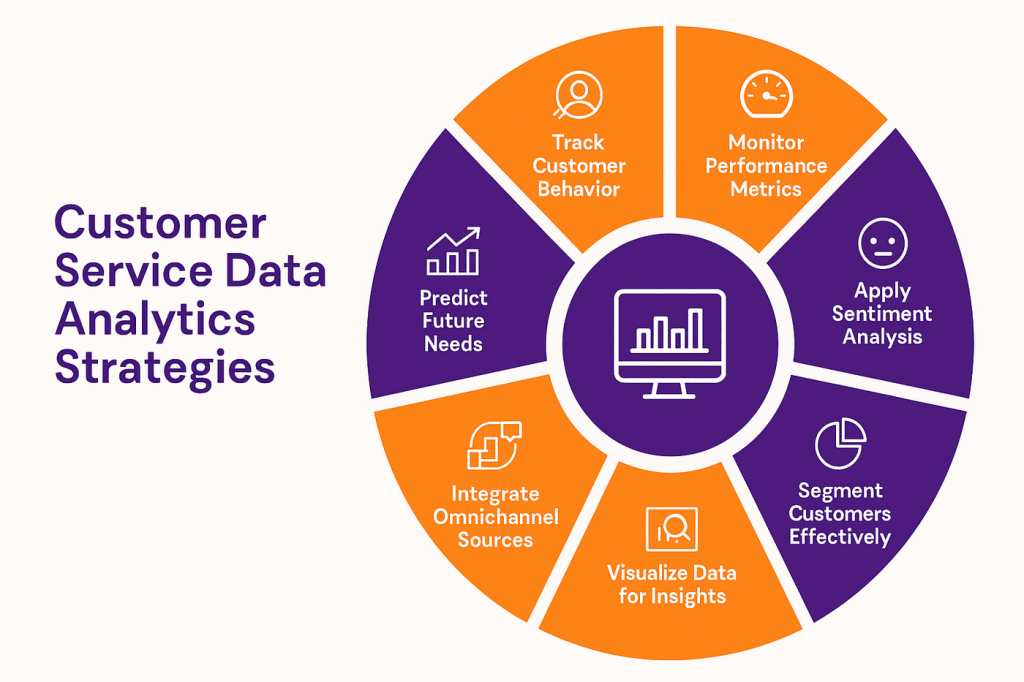
Track Customer Behavior Patterns
Systematic analysis of customer interaction patterns across multiple touchpoints reveals preferences, pain points, and opportunities that single-channel analysis misses. Behavioral pattern analysis helps teams understand customer journey experiences and identify intervention points that can improve satisfaction and efficiency simultaneously.
Pattern tracking should focus on behaviors that connect to business outcomes like retention, satisfaction, or revenue expansion rather than just operational metrics. Advanced pattern analysis, aligned with emerging data analytics trends, can reveal seasonal trends, demographic differences, and product-specific behaviors that inform strategic service planning.
Monitor Service Performance Metrics
Comprehensive performance monitoring combines efficiency metrics with quality indicators to ensure that operational improvements don’t compromise customer experience. Metric selection should focus on indicators that directly connect to business objectives rather than traditional operational measures that may not reflect customer value.
Performance monitoring becomes more valuable when it includes comparative analysis against industry benchmarks, historical trends, and internal goals. Real-time performance monitoring enables immediate intervention when metrics indicate potential problems or opportunities for improvement.
Use Sentiment Analysis Strategically
Sentiment analysis provides emotional context that traditional metrics miss, helping teams understand the qualitative aspects of customer service experiences. Strategic sentiment analysis focuses on emotional indicators that predict business outcomes like retention, expansion, or advocacy rather than just general satisfaction levels.
Sentiment trends over time reveal whether service improvements are having positive emotional impacts on customer relationships. Advanced sentiment analysis can identify specific communication approaches that consistently produce positive emotional responses from different customer segments.
Segment Your Customer Base
Customer segmentation based on behavior, value, and preferences enables personalized service approaches that improve both efficiency and satisfaction outcomes. An effective customer data strategy ensures segmentation considers multiple dimensions, including customer lifetime value, support needs, communication preferences, and business relationship characteristics.
Segment-specific service strategies should balance cost efficiency with experience quality to optimize resource allocation across different customer groups. Dynamic segmentation that updates based on changing customer characteristics ensures that service approaches remain relevant and practical over time.
Visualize Data for Quick Insights
Data visualization tools help teams quickly identify trends, patterns, and outliers that might be missed in traditional tabular reports or complex analytics outputs. Effective visualization focuses on insights that support specific decisions rather than comprehensive displays of all available data.
Interactive dashboards enable users to explore data relationships and drill down into specific issues or opportunities without requiring technical expertise. Visual analytics should be designed for different user roles, providing appropriate detail levels and insights for executives, managers, and front-line agents.
Integrate Omnichannel Data Sources
Comprehensive customer service analytics require data integration across all communication channels to understand complete customer experience journeys. Omnichannel integration reveals how customers move between different support channels and which channel combinations produce the best outcomes.
Integrated data analysis can identify channel preferences for different customer segments and issue types, enabling more effective channel strategy development. Cross-channel analytics also help organizations identify redundancies and gaps in their support channel offerings.
Predict Future Customer Needs
Predictive analytics services enable proactive service strategies that address customer needs before they become problems or missed opportunities. The need for prediction should focus on actionable insights that will allow specific intervention strategies rather than general forecasting about customer behavior.
Advanced predictive models can identify customers who would benefit from proactive outreach, additional services, or preventive support interactions. Predictive capabilities become more valuable when integrated with operational systems that can automatically trigger appropriate responses based on predicted customer needs.
Customer Service Analytics – Essential Takeaways
Customer service analytics transforms support operations by turning data into actionable insights. By analyzing metrics like CSAT, CES, TTR, and CLV, organizations can improve customer satisfaction, reduce resolution times, optimize agent productivity, and predict future service needs. Leveraging AI, omnichannel data, and predictive analytics, businesses deliver personalized, proactive experiences that enhance retention, operational efficiency, and revenue growth.
FAQs
Why is customer service analytics important?
Customer service analytics transform support from cost centers into strategic assets by revealing patterns that predict customer behavior and drive retention. Organizations using data-driven service approaches report 23% higher revenue growth compared to reactive support models.
What metrics should I track for customer service performance?
Focus on metrics that connect to business outcomes: CSAT for immediate feedback, Customer Effort Score for experience quality, churn rate for retention impact, and Customer Lifetime Value for financial context. These metrics provide actionable insights for strategic improvements.
How can analytics improve customer satisfaction?
Analytics identify specific service approaches that consistently produce positive outcomes, enable proactive issue resolution, and personalize support experiences based on customer preferences. This data-driven personalization increases satisfaction scores by an average of 15-20%.
Can small businesses benefit from customer service analytics?
Yes, small businesses often see faster ROI from analytics because they can implement changes quickly and have direct customer relationships. Cloud-based analytics platforms make sophisticated analysis accessible without significant technology investments or dedicated analytics teams.
Conclusion
Customer service data analytics marks a shift from reactive operations to predictive intelligence that fuels growth and a competitive edge. Organizations that excel in this area can consistently deliver exceptional experiences while improving efficiency. The future belongs to those who anticipate customer needs, turning interactions into insights that drive strategic decisions.Building these capabilities requires more than tools, but it needs the right partner. Folio3 Data Services help businesses harness customer data, uncover actionable insights, and implement scalable strategies that keep them ahead of evolving expectations and market competition. Start turning your customer data into a lasting advantage today.
